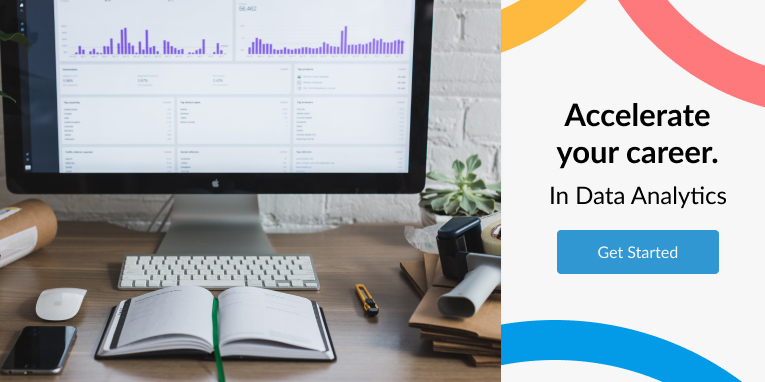Businesses across all industries generate data from their operations and interactions with customers. The raw data may seem random and senseless, but it can offer invaluable insights into ways to improve many aspects of your business. However, businesses need data analysts and reliable data analytics solutions to make sense of the raw data.
Data analytics is a lucrative and fast-growing industry with many opportunities and a stable future. To put it into perspective, the data analysis market is projected to grow to about $133 billion by 2026 from only $23 billion in 2019.
Are you interested in becoming a data analyst? Here is a comprehensive overview of how data analysis works and sneak peeks into what a career in the industry offers.
What is Data Analysis?
Data analysis is the process of refining and evaluating raw data to derive useful information and insights from it. A data analyst facilitates this process by finding, collecting, storing, cleaning, and analyzing the data using automated data analytics tools. The analyst then studies the results from the data and derives insights that the business (or any other institution) can use to improve its operations.
Data analysis has many applications and benefits for businesses. Most notably, it can increase profits by up to 6% and reduce costs by up to 10%. Overall, any organization or institution (not limited to businesses) that generates data could benefit from data analysis. The benefits of data analysis are undeniable, and global enterprises are expected to increase their investments in data analytics by 71%.
The Data Analysis process in 6 steps
Data analysis is a science – it follows a rigid step-by-step process. The process is rigid and entails five main steps that end with interpreting and sharing the process’s results. However, some data analysts and data analytics algorithms go one or two steps further to get the most out of the data analysis process. Here is an overview of how the data analysis process works in six steps:
1. Defining the problem statement & objective
What types of insights do you want to derive from data analysis? While you can get many varying insights from raw data, data analysis should be aimed at solving specific, pre-identified problems.
The first step of all data analytics processes involves setting an objective. The objective ultimately depends on the business’s needs or goals. For example, the business could be working towards making its digital marketing campaigns more efficient.
It is worth noting that the objective is usually framed as a question and referred to as a problem statement. For example, the problem statement, in this case, could be framed as, “How can the business get better results on its digital marketing campaigns?”
It is also worth noting that the problem statement (objective) should be more specific. A generalized approach will yield vague results that will not help the business achieve its objectives. For example, the business’s digital marketing campaigns could efficiently generate leads but inefficiently retain them. In this case, the problem statement could be framed as, “How can the business improve customer retention?”
A data analyst should work with other departments within the organization to define problem statements. The process requires intimate knowledge of the business and its present needs, and future goals. It also requires data about the business’s key performance indicators (KPIs) and other important metrics. Analysts can also use various automated tools to define objectives.
2. Collecting raw data
Businesses generate tons of data containing different types of insights. However, you don’t need to analyze all of this data – you need to only analyze the data relevant to the objective or problem statement.
There are three categories of specific data that you need to solve your problem statement:
First-party data
First-party data is collected directly from the customers by the company. There are many data collection techniques, including direct observation of interviews with the customers. However, most first-party data comes from the company’s Customer Relationship Management (CRM) system and other digital tools used to track transactional data.
Second-party data
Second-party data is another company’s first-party data. It is less relevant than your company’s first-party data, but it expands your options and the range of insights you gain from the analysis. Second-party data can be obtained directly from the company or through a vendor in a private marketplace.
Third-party data
Third-party data is called big data because it is collected from many different sources. You can obtain big data from vendors such as Gartner or public sources such as government databases. Third-party data can be structured or unstructured.
3. Cleaning the raw data
Some analysts spend up to 90% of their time on data cleaning to improve quality. This is because the results of the data analysis process depend on the quality of the data being analyzed.
- Bringing structure to unstructured data through solutions such as fixing typos and problems with the layout.
- Filling in major gaps in places where important data is missing.
- Removing unwanted data points irrelevant to the problem statement or objective.
- Removing duplicates, outliers, and other major errors in your data.
Albeit it may seem excessive, data cleaning is crucial to the rest of the process. It is necessary and worth it, and working with low-quality (unclean) data can compromise the whole process, making it necessary to start all over again.
4. Analyzing the cleaned data
The clean data is now ready for the main part of the data analysis process. You can use various data analytics techniques, depending on the type of data and the objective. There are many data analysis techniques, and they all fall within the following four categories:
Descriptive analysis
Descriptive analysis yields insights that have already happened. Based on the earlier example of a business struggling with customer retention, the insights could include the number of leads captured and the bounce rate. Descriptive analysis helps give a clearer view of the problem statement and the overall situation.
Diagnostic analysis
Diagnostic analysis explains why something has happened. Using the ongoing example, it will seek to explain why customers visit the business and interact with it but leave before buying (or after making a few purchases). The insights derived from diagnostic analysis are crucial to solving the problem and reaching the objective.
Predictive analysis
Predictive analysis derives insights about what is most likely to happen in the future based on historical data. For example, you can use it to determine how many more customers the business will lose if it doesn’t improve its marketing tactics – or how big it could grow if it improved its marketing tactics.
Prescriptive analysis
Prescriptive analysis offers recommendations about what to do in the future based on the other analyses’ insights. Ideally, it should offer solutions on how to achieve your set objectives. In this case, the insights answer the original question, “How can the business get better results on its digital marketing campaigns?”
5. Interpreting and sharing the results
The ultimate goal of data analysis is to find solutions to the business’s problems and help it achieve its objectives. The data analysis process has yielded the required solutions and insights, but the work is not yet complete. While the information may make sense to you, it may confuse people without a background in data analysis – an analyst should interpret it.
You can use a range of tools for data visualization and interpretation. The most efficient tools for presenting your final insights include interactive visualizations, reports, and dashboards. You may also need to explain your findings and answer the audience’s questions during the presentation, so it is advisable to prepare well.
It is worth noting that data analysis plays a major role in businesses’ decision-making processes. This means that your results and presentation will be instrumental to the business’s plans for the future. Misleading information will result in bad decisions that can cost the business dearly, so there is no room for errors throughout the process.
Launch your Data Analyst career with Pathstream
57% of businesses and organizations use data analysis to develop and implement their strategies and keep up with industry changes, and more businesses follow suit. A career in data analysis will bring many lucrative job opportunities and offer stability.
Pathstream is here to help you take advantage of those opportunities with our skilled jobs certificates. Our certificates include:
- Tableau Data Analytics Certificate
- Asana Project Management Certificate
- Salesforce Administration Career Certificate
- Facebook Digital Marketing Certificate
Our program can equip you with the top skills you need to launch your career in data analytics. Our data analytic resources share what a day in the life of a data analyst looks like and what companies are hiring data analysts. We also help you prepare for interviews with common data analyst interview questions and answers.
Our learning solutions feature an intuitive, immersive design that helps you get the most out of your new career. Get in touch today to discuss your future and learn more about how you can get started on your path to becoming a data analyst with Pathstream.
Was this helpful?
Thanks! What made it helpful?
How could we improve this post?






